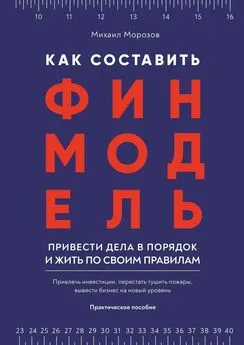Махо Молфино - Мифы о хорошей девочке. Как разрушить стереотипы и начать жить по своим правилам
- Название:Мифы о хорошей девочке. Как разрушить стереотипы и начать жить по своим правилам
- Автор:
- Жанр:
- Издательство:Манн, Иванов и Фербер
- Год:2021
- Город:Москва
- ISBN:978-5-00169-470-0
- Рейтинг:
- Избранное:Добавить в избранное
-
Отзывы:
-
Ваша оценка:
Махо Молфино - Мифы о хорошей девочке. Как разрушить стереотипы и начать жить по своим правилам краткое содержание
Издание будет интересно женщинам, увлекающимся психологией и саморазвитием.
На русском языке публикуется впервые.
Мифы о хорошей девочке. Как разрушить стереотипы и начать жить по своим правилам - читать онлайн бесплатно ознакомительный отрывок
Интервал:
Закладка:
Carol S. Dweck. «Is Math a Gift? Beliefs That Put Females at Risk», in Why Aren’t More Women in Science? Top Researchers Debate the Evidence, ed. Stephen J. Ceci and Wendy M. Williams (Washington, DC: American Psychological Association, 2007), 47–55, http://www.ms.uky.edu/~ma113/s.17/cdweckmathgift.pdf, accessed July 15, 2019.
26
Jennifer Henderlong. «Beneficial and Detrimental Effects of Praise on Children’s Motivation: Performance Versus Person Feedback» (PhD diss., Stanford University, 2000), https://search.proquest.com/docview/304628933.
27
Edward L. Deci and Richard M. Ryan. «The Empirical Exploration of Intrinsic Motivational Processes», in Advances in Experimental Social Psychology, vol. 13, ed. Leonard Berkowitz (Cambridge, MA: Academic Press, 1980), 39–80. Edward L. Deci and Richard M. Ryan. Intrinsic Motivation and Self-Determination in Human Behavior (New York: Plenum Press, 1985), 86.
28
Audrey Kast and Kathleen Connor. «Sex and Age Differences in Response to Informational and Controlling Feedback», Personality and Social Psychology Bulletin 14, no. 3 (1988): 514–523, https://doi.org/10.1177%2F0146167288143010.
29
Zachary Estes and Sydney Felker. «Confidence Mediates the Sex Difference in Mental Rotation Performance», Archives of Sexual Behavior 41, no. 3 (2012): 557–570, https://doi.org/10.1007/s10508-011-9875-5.
30
Tom Kelley and David Kelley. Creative Confidence: Unleashing the Creative Potential Within Us All (New York: Currency, 2013).
31
Cigna. «Cigna’s U. S. Loneliness Index: Survey of 20,000 Americans Examining Behaviors Driving Loneliness in the United States», May 1, 2018, accessed July 15, 2019, https://www.multivu.com/players/English/8294451-cigna-us-loneliness-survey/.
32
Harvard Medical School, National Comorbidity Survey. «NCS-R: Lifetime Prevalence Estimates», «Table 1. Lifetime Prevalence of DSM — IV/WMH-CIDI Disorders by Sex and Cohort», 2007, accessed July 15, 2019, https://www.hcp.med.harvard.edu/ncs/ftpdir/NCS-R_Lifetime_Prevalence_Estimates.pdf.
33
Joseph L. Dieleman, Joseph L., Ranju Baral, Maxwell Birger, Anthony L. Bui, Anne Bulchis et al. «US Spending on Personal Health Care and Public Health, 1996–2013». JAMA 316, no. 24 (2016): 2627–2646, https://doi.org/10.1001/jama.2016.16885; Craig M. Hales et al. «Prevalence of Obesity Among Adults and Youth: United States, 2015–2016», NCHS Data Brief No. 288 (Hyattsville, MD: National Center for Health Statistics, 2017), accessed July 15, 2019, https://www.cdc.gov/nchs/products/databriefs/db288.htm.
34
Roddy Scheer and Doug Moss. «Use It and Lose It: The Outsize Effect of U. S. Consumption on the Environment», Scientific American, accessed July 15, 2019, https://www.scientificamerican.com/article/american-consumption-habits/.
35
Kristin Neff. Self Compassion: Stop Beating Yourself Up and Leave Insecurity Behind (London: Hachette UK, 2011).
36
William James. «What Is an Emotion?» Mind 9, no. 34 (1884): 188–205.
37
Julie Holland. «Medicating Women’s Feelings», New York Times, February 28, 2015, accessed July 15, 2019, http://nytimes.com/2015/03/01opinion/sunday/medicating-womens-feelings.html.
38
Brené Brown. The Gifts of Imperfection: Let Go of Who You Think You’re Supposed to Be and Embrace Who You Are (Center City, MN: Hazelden, 2010).
39
Ronald C. Kessler et al. «The Epidemiology of Major Depressive Disorder: Results from the National Comorbidity Survey Replication (NCS-R)», JAMA 289, no. 23 (2003): 3095–3105, https://doi.org/10.1001/jama.289.23.3095.
40
Susan Nolen-Hoeksema. «Sex Differences in Unipolar Depression: Evidence and Theory», Psychological Bulletin 101, no. 2 (1987): 259–282.
41
Thomas Buckley and Alma Gottlieb, eds. Blood Magic: The Anthropology of Menstruation (Berkeley: Univ. of California Press, 1988), 190.
42
Buckley and Gottlieb. Blood Magic.
43
Michelle N. Shiota, Dacher Keltner and Amanda Mossman. «The Nature of Awe: Elicitors, Appraisals, and Effects on Self-Concept», Cognition and Emotion 21, no. 5 (2007): 944–963, https://doi.org/10.1080/02699930600923668.
44
Dacher Keltner and Jonathan Haidt. «Approaching Awe, a Moral, Spiritual, and Aesthetic Emotion», Cognition and Emotion 17, no. 2 (2003): 297–314, https://doi.org/10.1080/02699930302297.
45
Brené Brown. Daring Greatly: How the Courage to Be Vulnerable Transforms the Way We Live, Love, Parent, and Lead (New York: Penguin, 2015).
46
Anthony Perone and Artin Göncü. «Life-Span Pretend Play in Two Communities», Mind, Culture, and Activity 21, no. 3 (2014): 200–220, https://doi.org/10.1080/10749039.2014.922584.
47
Lyn Mikel Brown and Carol Gilligan. Meeting at the Crossroads: The Landmark Book About the Turning Points in Girls’ and Women’s Lives (New York: Ballantine Books, 1992), 217.
48
Brown and Gilligan. Meeting at the Crossroads, 40.
49
Eileen Fisher. «Reclaiming the Voice», interview by Majo Molfino, August 4, 2016, in HEROINE: Women’s Creative Leadership, Confidence, Wisdom, podcast produced by Majo Molfino, 53:54, https://podcasts.apple.com/us/podcast/eileen-fisher-reclaiming-the-voice/id1100949693?i=1000373712256.
50
«Method: I Like, I Wish, What If», Method Cards, Stanford d.school, accessed July 15, 2019, https://dschool-old.stanford.edu/wp-content/themes/dschool/method-cards/i-like-i-wish-what-if.pdf.
51
Marshall Rosenberg. Nonviolent Communication: A Language of Life, 3rd ed. (Encinitas, CA: PuddleDancer Press), Kindle.
52
Rosenberg. Nonviolent Communication, locs. 1682–1686.
53
Clarissa Pinkola Estés. Women Who Run with the Wolves: Myths and Stories of the Wild Woman Archetype (New York: Ballantine Books, 1992), 39.
54
Estés. Women Who Run with the Wolves, 47.
55
Estés. Women Who Run with the Wolves, 49.
56
Estés. Women Who Run with the Wolves, 45.
57
Estés. Women Who Run with the Wolves, 61.
58
Luvvie Ajayi. «Speak Up and Tell Your Truth», interview by Majo Molfino, May 31, 2018, in HEROINE: Women’s Creative Leadership, Confidence, Wisdom, podcast produced by Majo Molfino, 44:23, https://podcasts.apple.com/us/podcast/speak-up-tell-your-truth-luvvie-ajayi/id1100949693?i=1000412648305.
59
Audre Lorde. Sister Outsider: Essays and Speeches (Berkeley, CA: Crossing Press, 1984), 117.
60
Darby Morhardt. «Gender Differences in Family Caregiving», research summary presentation, Cognitive Neurology and Alzheimer’s Disease Center, Northwestern University Feinberg School of Medicine, 2017, accessed July 15, 2019, https://www.caregiving.org/wp-content/uploads/2017/04/9NAC-Morhardt.pdf.
61
Morhardt. «Gender Differences».
62
Twyla Tharp. The Creative Habit: Learn It and Use It for Life (New York: Simon & Schuster, 2008).
63
Roy F. Baumeister et al. «Ego Depletion: Is the Active Self a Limited Resource?» Journal of Personality and Social Psychology 74, no. 5 (1998): 1252–1265.
64
BJ Fogg. «Find a Good Spot in Your Life», Tiny Habits, accessed July 15, 2019, http://tinyhabits.com/good-spot.
65
Alan W. Watts. The Wisdom of Insecurity: A Message for an Age of Anxiety (New York: Vintage, 1951).
66
Shelley E. Taylor et al. «Biobehavioral Responses to Stress in Females: Tend-and-Befriend, Not Fight-or-Flight», Psychological Review 107, no. 3 (2000).
Интервал:
Закладка:










